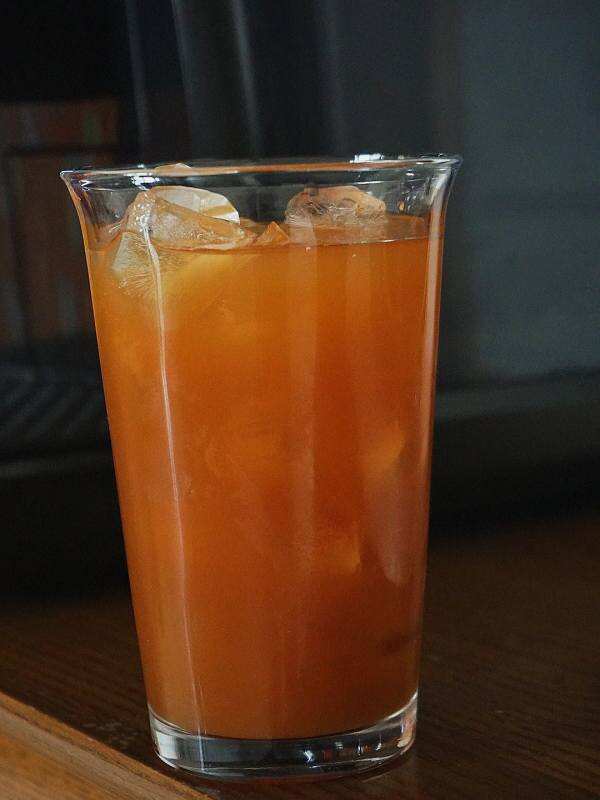Is Oolong Tea Caffeinated? Your Complete Guide to Caffeine in Oolong
So, you’re wondering, “Is oolong tea caffeinated?” Maybe you’re trying to cut back on coffee but still want an energy boost, or perhaps you’re sensitive to caffeine and need to know what’s in your cup. Either way, you’ve come to the right place. Let’s dive into the world of oolong tea, break down its caffeine content, and answer all your burning questions—no jargon, just straight facts!
Yes, Oolong Tea Has Caffeine (But Here’s the Scoop)
First things first: oolong tea does contain caffeine. It’s a semi-oxidized tea, sitting between green tea (minimally oxidized) and black tea (fully oxidized). This unique processing gives oolong its signature flavor—ranging from floral and grassy to toasty and nutty—but it also affects its caffeine levels.
On average, an 8-oz (240ml) cup of oolong tea packs 30–50 milligrams of caffeine. To put that in perspective:
Green tea: 20–45 mg per cup
Black tea: 40–70 mg per cup
Coffee: 95 mg per cup
So, oolong’s caffeine content is like a middle child—not too high, not too low. But wait, why does the range vary so much? Let’s unpack that.
What Affects the Caffeine in Your Oolong Tea?
Not all oolongs are created equal! Here’s what determines how much caffeine ends up in your mug:
The Tea Leaves Themselves
Younger leaves and tea buds naturally have more caffeine than older leaves. Fancy oolongs (like high-grade Tieguanyin) often use tender leaves, which means slightly higher caffeine.
The tea variety matters too. For example, dark, heavily oxidized oolongs (like Da Hong Pao) might have slightly more caffeine than lighter ones.
How You Brew It
Water temperature: Hotter water (near boiling) extracts caffeine faster. Using slightly cooler water (185°F/85°C) can lower caffeine levels.
Steeping time: Letting the leaves swim longer? More caffeine gets released. A quick 1–2 minute steep = less caffeine than a 5-minute brew.
Amount of leaves: More tea leaves = stronger flavor and more caffeine.
Processing Tricks
While oxidation doesn’t directly increase caffeine, some processing steps (like roasting) might slightly alter caffeine content. But this is minor compared to brewing habits.
Oolong vs. Other Drinks: How Much Caffeine Are We Talking?
Let’s play a quick comparison game:
Oolong (30–50 mg): Perfect if you want a gentler lift than coffee but more oomph than green tea.
Matcha (70 mg): Powdered green tea packs a bigger punch.
Decaf coffee (2–5 mg): Almost caffeine-free, but oolong tastes better (fight me).
Herbal teas (0 mg): Chamomile, peppermint, and rooibos are caffeine-free alternatives.
Pro Tip: If you’re swapping coffee for oolong, you’ll get about half the caffeine per cup. Need a stronger kick? Try a darker oolong or steep it longer!
“But I’m Sensitive to Caffeine!” – No Worries, Here’s Your Game Plan
If caffeine makes you jittery or messes with your sleep, you don’t have to give up oolong. Try these hacks:
Go for Low-Caffeine Oolong
Look for “de-caf” oolong teas. Brands like Harney & Sons or The Republic of Tea offer decaffeinated versions.
Choose aged oolongs. Some tea drinkers claim older leaves have less caffeine, though science isn’t 100% clear on this.
Master the “Rinse” Trick
Pour hot water over the leaves, wait 30 seconds, then dump that first brew. This “washes” away some caffeine (and any dust). Keep steeping the same leaves for your actual cup.
Shorten Steep Time
Limit brewing to 1–2 minutes. You’ll still get flavor without maxing out the caffeine.
Drink It Earlier in the Day
Caffeine’s effects can linger for 4–6 hours. Sip your oolong before 2 PM if you’re caffeine-sensitive.
Why Oolong’s Caffeine Might Actually Be a Good Thing
Before you panic about caffeine, remember that oolong’s got some serious perks:
Metabolism boost: Studies suggest oolong may help burn fat and improve metabolism, partly thanks to caffeine + antioxidants.
Focus without the crash: Unlike coffee, oolong provides a smoother energy lift (no jitters!).
Heart health: Regular oolong drinkers may have lower risks of heart disease.
Plus, it’s packed with polyphenols—antioxidants that fight inflammation and keep your cells happy.
Myth Busting: “All Fermented Teas Have Less Caffeine!”
Nope! Fermentation (oxidation) affects flavor and color, not caffeine. For example:
Green tea (unoxidized) can have less caffeine than oolong (partially oxidized), but it depends on the leaves and brewing.
Black tea (fully oxidized) often has more caffeine than oolong, but again, brewing plays a role.
The real caffeine MVP? The tea plant itself. Camellia sinensis (the plant used for green, black, and oolong teas) naturally contains caffeine. Herbal “teas” (like chamomile) aren’t from this plant, so they’re caffeine-free.
Final Takeaway: Should You Drink Oolong Tea?
If you love nuanced flavors and a moderate caffeine kick, oolong is a winner. It’s versatile, healthy, and way more interesting than plain old coffee.
TL;DR:
✅ Oolong does have caffeine—about 30–50 mg per cup.
✅ Adjust caffeine levels by changing how you brew it.
✅ Health perks include antioxidants and a metabolism boost.
🚫 Not for caffeine-free seekers (try herbal teas instead).
So, next time you’re eyeing that oolong tin, go for it! Whether you’re sipping it hot or iced, you’re in for a tasty, energizing treat.














Add comment
You must be logged in to post a comment.